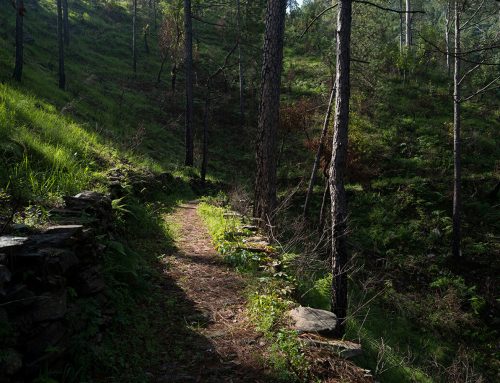Meeting Kamtrul Rinpoche, meditating at Achin Togden’s samadhi, a glimpse of a Togden yogi and tea with Ani Tenzin Palmo.
I get a call from the DLG Nunnery saying Ani Tenzin Palmo needs to re-schedule our meeting to the following day, so I go back to Tashi Jong with my two dharma pals. As soon as we arrive, who should appear on the path in front of us if not the nun herself, also on her way to meet with Khamtrul Rinpoche. She’s friendly and has a piercing gaze, and is in extraordinary good shape, a sprightly being, from all the years of climbing to her cave. She graciously suggests we go in first. I offer Rinpoche a white scarf (kata) and he blesses me. He is only 30 and is the incarnate of the previous 8th Khamtrul Rinpoche who was Tenzin Palmo’s guru and good friend. Apparently, the first time she met this version of Khamtrul Rinpoche when he was about 6, he clapped his hands together with delight and said, “Oh, my nun is here.”


We go up to the top of the mountain, to Achin Togden’s samadhi surrounded with windows offering a panoramic view. I see a deer climb up onto a rock outcropping and stay perfectly still for what seemed ages. Soon Tenzin Palmo comes into the room. She pays her respects to her old friend with a big smile, beaming with love, and sits behind me to meditate. I am overcome with tears of joy and feel my heart explode. I simply cannot believe that Tenzin Palmo, Tashi Jong and the Togdens have suddenly all manifested in my life. I feel such gratitude to the spiritual path.
The next day, I arrive at Dongyu Gatsal Ling Nunnery for our appointment. Her private study is spacious and packed with books and a writing desk, seemingly dark brown and burgundy, with clear light streaming through the windows. She sits in an upholstered chair in her robes; me on a matching couch. She is very close. If I was at all nervous, her genuine kindness and humour immediately puts me at ease. I don’t want to waste her time. I briefly tell her about my spiritual experiences 25 years on the yoga path, with forays into shamanism and Vipassana meditation, how I’ve always believed the guru lies within but with the Vajrayana path a guru is essential, and while I experience much more joy and ease in my life, I doubt that moksha (liberation) is possible in this lifetime. That’s a problem for me. I’m not asking her to be my teacher as I have a superstar Vajra master, but since all Buddhist practitioners are essentially on their own path, I wonder what my practice should be. She laughs, “Isn’t that the million dollar question?”


According to Ani Palmo, the main challenge for Westerners trying to practice Tibetan Buddhism is not only finding the time in our busy lives, but that there are so many distractions in our culture. She says, “Despite the fact that our minds are where we actually live, they are like rubbish heaps. Every day newspapers, television, radio, gossip, years of negative mind chatter and futile memories of things people did to harm us churn around in the mind – resentments, jealousies and frustrations going way back to childhood, and they stay there fermenting. And then, on top of this junk pile we want to build a beautiful spiritual temple. We want to become great meditators and wonder why it doesn’t work. So, before we try to add grand tantric visualizations to this mess, we need to empty the mind with Shamatha meditation, or they will not penetrate into a deep part of the mind beyond words.” I agree completely but I’ve deliberately been emptying my mind out. I rarely read newspapers and didn’t have a TV for 25 years, and I’ve been doing yoga.

About the tantric practice, she says, “The visualizations of deities are emanations of the ‘wisdom mind’ as they have appeared to realised masters throughout the ages. Because of this they can open us up to extremely deep levels of consciousness. To transform the mind completely, we need a method that can reach these deeper levels. Visualization is skillful conduit back to very profound realms of our psyche that cannot be accessed through logical, linear thinking. The deeper and more primitive levels respond to images rather than words. But the whole point is to get realizations, not visions, where truth stops being a mental construct and becomes real. Only when the mediation drops from the head to the heart and is ‘felt’ can transformation begin to take place. When that happens, the heart opens and there is no ‘I,’ and that is a relief.”

She cautions me about being too ambitious. “Many people take on too many ‘commitments,’ or Buddhist practices, and what is intended to be a transformation of your life into real meaningfulness and joy, becomes just a heavy burden and there won’t be any time to actually look at the mind. If we really want to transform our lives, it’s essential to integrate the practice into our everyday life until there is no separation between practice time and our life, our relationships and our work. We need to really get our ethical life together, be responsible for our actions, and understand what is virtuous and non-virtuous. Deal with non-harming, not lying, refraining from sexual misconduct. Come to terms with own our anger and greed, and inherent delusion and confusion. Know that the world is a reflection of the minds of the beings inhabiting it.”

On the subject of Boddhicitta, she says once we start to clear out the rubbish heap, we will have more clarity. “You will see people more clearly. See their suffering behind the facade. We want to be happy but, the confusion and poison in our mind, unintentionally, create problems for ourselves and others. This is the same for others, so compassion should naturally arise. We cannot have genuine wisdom without compassion, or genuine compassion without wisdom. This should be your motivation as to why you are doing this practice. The best way is to cultivate a compassionate heart, Boddichitta, and act for the benefit of all sentinent beings.” Compassion is the cornerstone of the Buddhist path and she recommends that I practice Tong Len on the tube.
I ask about her nuns and the intention to train them to become Togdemnas. Not surprisingly, it’s been challenging to find a yogi willing to pass on the transmission of the Six Yogas of Naropa. The nuns have just come out of a 3-year retreat and the Togden from Tashi Jong told them they had to do another 12 years! She found someone else in Tibet to do it but he suddenly died. On a recent trip to Tibet, she visited a nunnery with 7,000 nuns. Part of their tantric practice involves meditation, neck deep in a hole in the earth and staring at the sky. What an extraordinary image to see all these hills with small still heads turned upwards in meditation. They also practice ‘tummo’ where they put damp sheets on their naked bodies in sub-zero temperatures and dry the sheets by generating inner heat. With a dry sense of humour, she says that Tibetans are extremely ‘focused.’ I laugh. Ani Palmo is confident that the right teacher will emerge for her nuns. I offer to sponsor a nun, as it’s too late for me to be a Togdemna in this life, but I’d really like to help someone else do it. I admire Tenzin Palmo for her earthiness, her extreme practicality and her ability to bring the practice down to earth and into our life.







